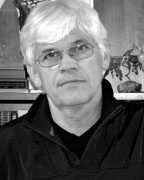
Jozsef Nagy (HUN/USA/CAN/ESP)
Honor Coach (2014)
FOR THE RECORD: 1980 OLYMPIC GAMES: Assistant Coach (HUN); 1984 OLYMPIC GAMES: Assistant Coach (HUN (boycott); 1988 OLYMPIC GAMES: Unofficial Coach (USA); Coach of 1990 European Record Holder, Sergio Lopez; 1992 OLYMPIC GAMES: Coach of 200m breast-stroke gold medalist, Mike Barrowman, Assistant Coach (SPN); 2008 OLYMPIC GAMES: Assistant Coach (CAN); 2012 OLYMPIC GAMES: As-sistant Coach (CAN); 1991 WORLD CHAMPIONSHIPS: Assistant Coach (USA); 2009 WORLD CHAMPIONSHIPS: Assistant Coach (CAN); 2010 WORLD CHAMPIONSHIPS (SC): Assistant Coach (CAN); 2011 WORLD CHAMPIONSHIPS: Assistant Coach (CAN); 2012 WORLD CHAMPI-ONSHIPS (SC): Assistant Coach (CAN); COACH OF TWO WORLD RE-CORD HOLDERS SETTING NINE WORLD RECORDS AND ONE RE-LAY WORLD RECORD; COACH OF THREE SWIMMERS WINNING ONE GOLD, SILVER AND BRONZE MEDAL AT WORLD CHAMPIONSHIPS; 37 YEAR HISTORY OF NUMEROUS NATIONAL CHAMPIONSHIPS IN HUN, USA, SPN, CAN; 2010 COMMONWEALTH GAMES: Assistant Coach (CAN); 2007 PAN AMERICAN GAMES: Assistant Coach (CAN); 1985, 1991, 1987, 1999, 2000 EUROPEAN CHAMPIONSHIPS: Assistant Coach; FOUR-TIME CANADIAN COACH OF THE YEAR (Female).
He was born and raised in Hungary and may know more about the breaststroke than anyone in the world. Not surprisingly, Jozsef Nagy was a breaststroker himself. He won the Hungarian Jr. National Championship in 1973 and com-peted for Hungary internationally. After he retired from swimming in 1976, he studied physical education at the University of Budapest and earned a presti-gious Master Coach certificate. During this time, he read an article on the pat-tern of ocean waves by Nobel physicist Richard Feynman. Applying principles of physics to swimming, the idea for “wave-action breaststroke was born. It was originally just a theory, created on paper – but then proven in “practice” by Janos Dzvonyar, who placed 5th in the Moscow Olympic Games of 1980.
Until Nagy came along, breaststrokers glided along the surface like al-ligators. Their bodies rode low in the water, with only their backs and the crowns of their heads visible. In the 1980’s, breaststrokers began to resemble buoys bobbing in the water as the stroke became more vertical.

In 1986, Nagy moved to the United States and began coaching Mike Bar-rowman, the first swimmer to perfect “the wave” by channeling his power into smooth, undulating motions.
To help Barrowman grasp the idea, Nagy showed him footage of a cheetah on the run. “A cheetah keeps his head down and lifts his shoulders to run,” Barrowman said, “It really did help me to get a mental picture of what the shoulders needed to do in the stroke.”
Between 1988 and 1992, Barrowman dominated the 200 meter breaststroke, winning 15 of 16 major national and international competitions and the world record he set at the Barcelona Olympic Games held for ten years.
In addition to Barrowman, Nagy coached swimmers from four different nations to international success including, Roque Santos of the USA, Sergio Lopez of Spain, Gabriella Cespo and Norbert Rozsa of Hungary, and Canada’s Annamay Pierse.
The inventor of the “wave action breaststroke,” Joszef Nagy developed numerous dry land exercises and swim sets that are now widely used and he has generously shared and explained his ideas via articles, speeches and lectures around the world since the late 1980’s.
